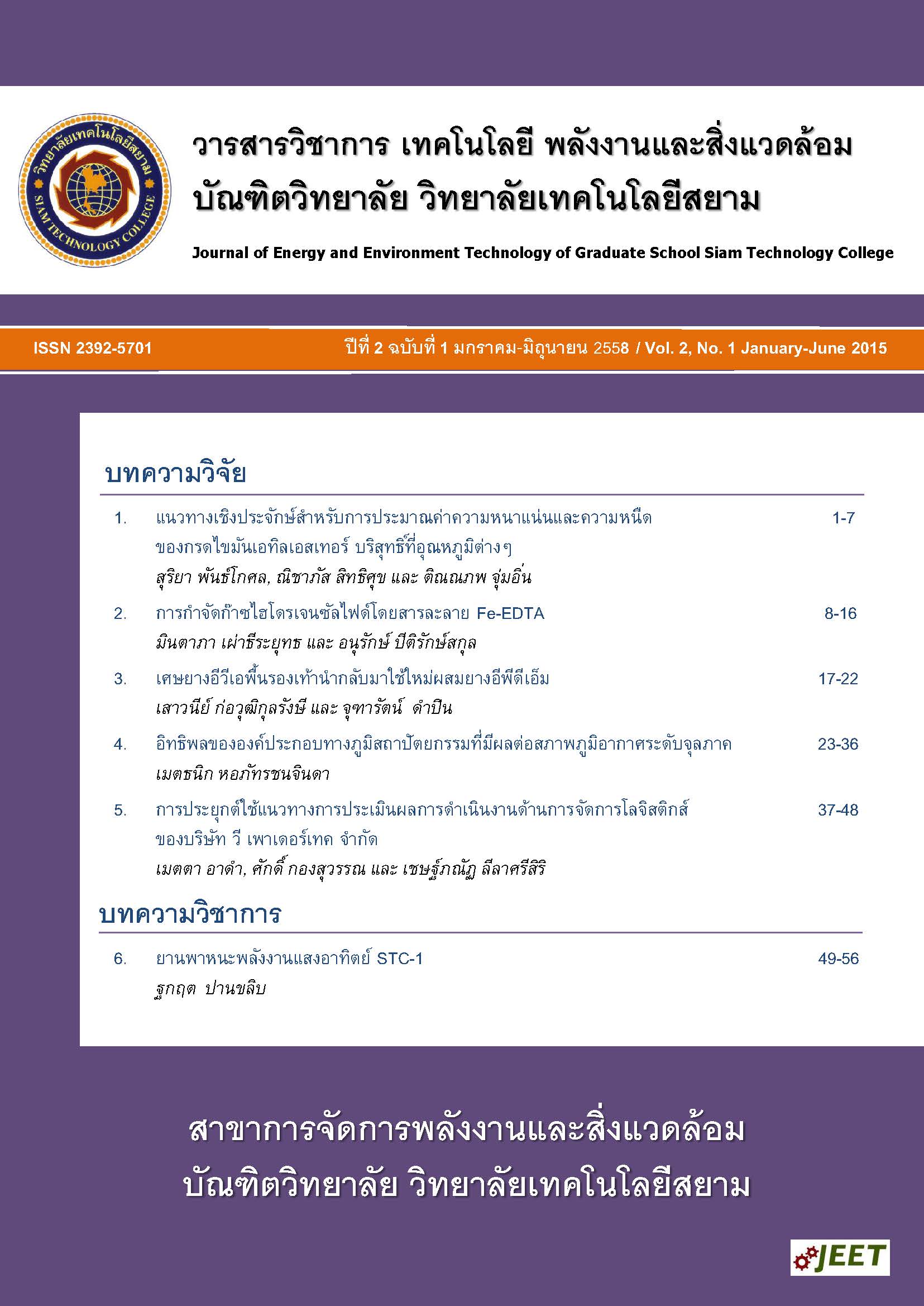STC-1 Solar Energy Vehicle
Main Article Content
Abstract
Electric or solar energy vehicle with more advantages of no noise, no pollution, saving energy and reduce carbon dioxide emissions is to power-driven vehicle with a motor drive wheels moving. Solar electric vehicle can make to reduce our greenhouse gas emissions and other pollution. All advantages of solar electric vehicle make research and development of solar electric vehicle of automotive industry and the trend of future cars. Solar electric vehicle is made of PV panels, battery, electric motor, vehicle controller and vehicle body. Solar electric vehicle drives using dual-mode of PV and battery hybrid. It can be achieved PV-driven and battery-driven independently. The solar electric vehicle can achieve low-carbon society, energy saving, environmental protection and true zero-emissions for the future.
Article Details
เนื้อหาและข่อมูลในบทความที่ลงตีพิมพ์ในวารสารวิชาการ เทคโนโลยี พลังงาน และสิ่งแวดล้อม บัณฑิตวิทยาลัย วิทยาลัยเทคโนโลยีสยาม ถือเป็นข้อคิดเห็นและความรับผิดชอบของผู้เขียนบทความโดยตรง ซึ่งกองบรรณาธิการวารสารไม่จำเป็นต้องเห็นด้วย หรือว่าร่วมรับผิดชอบใด ๆ
บทความ ข้อมูล เนื้อหา รูปภาพ ฯลฯ ที่ได้รับการตีพิมพ์ในวารสารวิชาการ เทคโนโลยี พลังงาน และสิ่งแวดล้อม บัณฑิตวิทยาลัย วิทยาลัยเทคโนโลยีสยาม ถือเป็นลิขสิทธิ์ของวารสารวิชาการ เทคโนโลยี พลังงาน และสิ่งแวดล้อม บัณฑิตวิทยาลัย วิทยาลัยเทคโนโลยีสยาม หากบุคคล หรือหน่วยงานใดต้องการนำทั้งหมด หรือส่วนหนึ่งส่วนใดไปเผยแพร่ต่อ หรือเพื่อกระทำการใด ๆ จะต้องได้รับอนุญาต เป็นลายลักษณ์อักษรจากวารสารวิชาการ เทคโนโลยี พลังงาน และสิ่งแวดล้อม บัณฑิตวิทยาลัย วิทยาลัยเทคโนโลยีสยาม เท่านั้น
References
[2] R. J. King, “Photovoltaic applications for electric vehicles,” Conference Record of the Twenty First
IEEE Photovoltaic Specialists Conference, vol. 2, pp. 21–25, 1990.
[3] H. Hoshino, H. Uchida, H. Kimura, K. Takamoto, K. Hiroka, and Y. Matsumae, “Preparation of a nickel-metal hydride (ni-mh) rechargable battery and its application to a solar vehicle,”
International Journal of Hydrogen Energy, vol. 26, pp. 873–877, 2001.
[4] M. W. Daniels and P. R. Kumar, “The optimal use of the solar powered automobile,” Control
Systems Magazine, IEEE, vol. 19, no. 3, pp. 12–22, 1999.
[5] H. Shimizu, J. Harada, C. Bland, K. Kawakami, and L. Chan, “Advanced concepts in electric vehicle design,” IEEE Transactions on Industrial Electronics, vol. 44, no. 1, pp. 14–18, 1997.


